With all the talk and aggravation associated with airline cancelations and delays, pilot discontent, and possible strikes that seem poised to only get worse, this may come as welcome news. When the next generation of Hawaii interisland planes comes on board, which is now planned to start in 2025 through 2028, unprecedented changes in interisland travel may occur. That may no longer include going to airports, having airline pilots, or TSA screening, and a much faster overall island-to-island service. How is that even possible?
How hybrid aircraft/watercraft will change everything.
The company at the helm is Regent, which is based on a team of MIT-trained, prior Boeing aircraft engineers. The name of the company comes from “Regional Electric Ground Effect Nautical Transport.” The company is determined to deliver zero-emission, high-speed Seagliders, which fly on a cushion of air, into the marketplace in the next three years. They’ve been in the news repeatedly for their two new craft, which may well be game-changing for Hawaii. Although a new name in interisland craft, they’ve also quickly amassed half a billion dollars in pre-orders.
Big money says this is going to happen.
Regent has deep pockets, thanks to investors including Mark Cuban, Y Combinator, Thiel Capital, and others. Cuban said, “The efficiency of coastal transportation will be 100x greater with Regent… The idea of having to get between two coastal points is always stress inducing. Regent changes all that and makes it fast and easy. Regent will give people a step-change improvement in transportation. Passengers will spend less time in transit and more time with their families.”
Regent said, “Hawaiʻi is such a unique and interesting market. It’s been a hotbed of aviation really since the dawn of aviation because of the distances between the islands, the treachery of the waterways between the islands too. We’ve approached the market with a listen-first, community-first, environment-first mindset. We’ve solicited lots of feedback.”
Their interisland “craft” for lack of a better term, will connect the islands using Hawaii’s docks. They operate as a boat until they reach open water, at which point they take-off onto the wing as an aircraft and accelerate to 180 miles per hour. The craft never rises more than one wingspan above the water.
Questions remain to be answered.
Still being studied is the impact of wind and wave conditions, although the company feels certain that they’ll succeed in these, as well as being environmentally and sea-life friendly. We have to think they are right, as they would have needed to offer some degree of proof in that regard to both Hawaiian and Mokulele airlines who wil be using this craft.
Docks and harbors are being investigated, but you expect these fleets to operate at Honolulu Harbor, perhaps even at the prior location of the failed Hawaii Superferry near downtown Honolulu. The harbor is a beautiful, bustling location with great views and food options far beyond anything at HNL.
Regulatory issues still will need to be addressed too. Regent is set to begin work with the Hawaii Department of Transportation and Department of Land and Natural Resources, the U.S. Coast Guard and the U.S. Army Corps of Engineers.
Regent says that these first planes will be under U.S. Coast Guard regulations as boats rather than under FAA guidelines as aircraft. “Our first vehicle is projected to operate under Coast Guard jurisdiction.” They do say, however, that they are in close communication with both the USCG and FAA’s Emerging Concepts & Innovation Group.”Over time, a collaborative approach between aviation and maritime authorities is key to deploy seagliders at scale.”
It’s interesting to note that craft captains may not be airline pilots but rather boat captains.
Many questions come to mind. How will visitors arrive from the mainland on one flight and then transfer to a seaglider that’s based on the water? Will Hawaiian, for example, maintain a fleet of aircraft for connections, and a separate fleet of seagliders for exclusively interisland travel. Or will there be regular passenger shuttles between the airport and the harbor?
What about current airline pilots, who don’t appear to be a part of this equation. Is there anything in their contracts about watercraft and boat captains?
Phase 1: Southern Airways dba Mokulele Airlines.
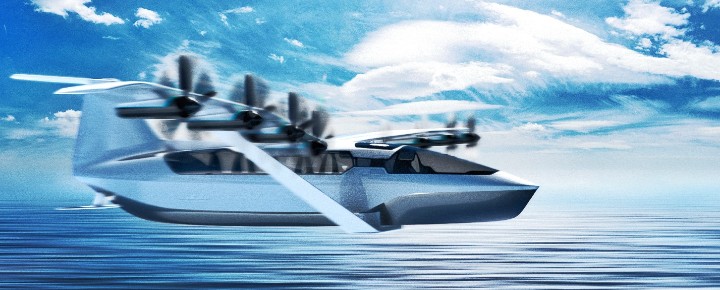

- The 12-seat Viceroy Seaglider may replace or augment their fleet of 9-passenger 208EX Cessna Grand Caravans.
- Routes include service between Honolulu, Lanai, Molokai, Maui (Hana, Kahului and Kapalua), and the Big Island (Hilo, Kona and Waimea.
- Possible service start date 2025.
- Partnership between Mokulele Airlines, Regent Craft, and Pacific Current/Hawaiian Electric.
- U.S. Coast Guard hydrofoil operations and training, not FAA.
- All electric, no emissions.
The Viceroy plane, which is much smaller than most interisland planes today, will take to the air later this year. Viceroy is currently in testing and has completed hydrofoil and float tests. Regent said that the planes may fly commercially in Hawaii within the next three years and align well with the goals of the state to become carbon-neutral.
Phase 2: Hawaiian Airlines.
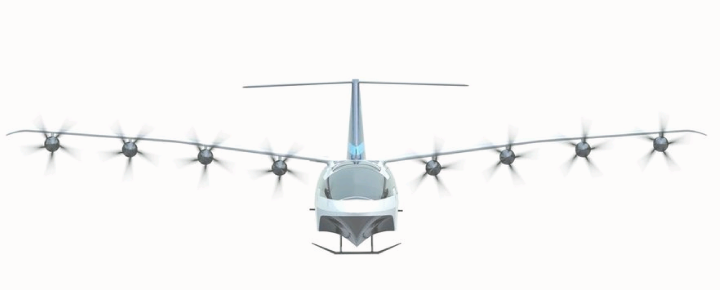

- The 100-seat Monarch Seaglider could replace or augment their fleet of aging 128-passenger Boeing 717s.
- Routes include service between Honolulu, Maui, Kauai, Hilo, and Kona.
- Possible service start date 2028.
- Currently a research partnership between Hawaiian Airlines and Regent Craft. No firm order.
- 22% less capacity than current Hawaiian Airlines fleet.
- U.S. Coast Guard hydrofoil operations and training, not FAA.
- All electric, no emissions.
How excited are you to see this change happen?
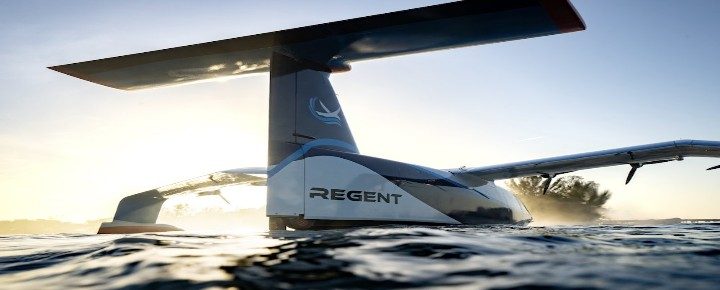
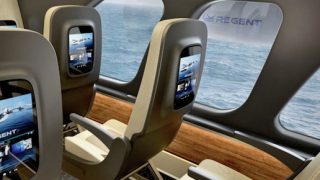

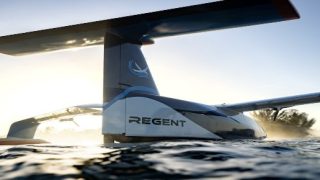
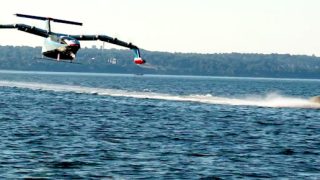
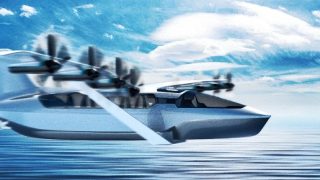
Hi Wally J! I do like the point that you have made about the Funding, has anyone realized that some, most, or all of them do get some sort of income? Imagine those that may receive SSI or SSD Income deposited directly and then those who receive Welfare Benefits. Of course they won’t pony up for a lawsuit or defense of one but there’s Pro Bono Attorneys waiting for this type of thing. Seen and Heard of this too many times, before you know it they’ll be living there, or wherever, with No Recourse from anyone. The Problem Exists because No Politicians did Anything to Stop It! Good Luck. Thanks for the Response.
How good is their radar since they are only “one wing span” above water? Will they be able to avoid not just commercial shipping but recreational fishing boats? Say a 35 foot boat with a flying bridge?
Also how fast is it? Cause moving fast right next to the surface of water sounds really deadly. Go watch a speed boat accident and realize that’s not even that fast.
Aircraft radar will provide the pilots with plenty of time to avoid boats, whales, etc ahead of them. No issue there.
How slow can they fly.
Is there a still speed?
Will there be designated sea ports as in the old days when the Sikorsky amphibious planes landed in Kailua Bay.
I hope the investors in this project do not make the same mistake that the Hawaii Superferry folks made. Right from the beginning they should make it clear that they will be preparing a comprehensive environmental impact statement triggered by their use of state harbor facilities.
Some of the impacts that they will have to assess include: harbor parking; public transportation, potential impacts of traffic in and around the harbor; impacts on other forms of harbor use: surfers, barges, cruise ships, etc,
Obviously, one of the potential benefits of this operation would be the fact that it would not rely on fossil fuels. It should be made very clear how the planes will be recharged at the end of each flight.
As a Kaamaina,who has been living in Honolulu, Hawaii for 30 years, I say that’s a good idea! Creativity and Innovation will be what is going to resurrect Hawaii’s number one industry which is Tourism!
How often will these high speed vehicles tragically collide with breaching whales?!?
Less likely than a mid air collision between two airliners I’m guessing….technology has all but eliminated those.
Exciting!!
As a resident and many locals have said No No and No!
Assuming the price was economically viable, ordinary persons who live here stand to benefit the most from the freedom of movement such transportation might provide.
Long gone are $60 inter-island flights. Used to be able to show up at the airport and get on, very much like a bus. They would fly every hour.
Inter-island transport is ripe for a solution. It’s got to be cheap, or it won’t “fly”
This type of transportation should revolutionize travel between the islands for certain. I have wondered when something similar to this would be embraced, just not to the extent that these will achieve. Water Taxis and larger airboats have been in use for decades in Europe and Asia saving money and time with point to point travel. Good Luck, Regent! Be looking forward to seeing this as a viable, hopefully reasonable, option!
Sounds like a great idea! Hoping this doesn’t get shot down like all other plans to add to interisland travel. We need something like this since the super ferry was nixed!
Whale well-being and seabird flights must be taken into consideration before this low flying aircraft can be allowed into Hawaiian airspace. How high does a Humpback whale breech? Do wind currents predict flock/seaglider collisions? People are not the only residents of Hawaii, some of whom already travel inter-island. Their safety in continuing to do so needs to be respected.
Waimea?
I look forward to new travel innovations. I would certainly entrain using an option like this. We like to do a few days on one island then move to another. This would be for more interesting than the airport.
All electric, no emissions.
NOT true….all energy creating activity generates emissions of some sort. To say otherwise leaves the reader misinformed.
So you really think this technology wouldn’t drastically reduce emissions compared to current aircraft? Really???
There’s lots of misinformation in this article.
“Their interisland “craft” for lack of a better term, will connect the islands using Hawaii’s docks. They operate as a boat until they reach open water, at which point they take-off onto the wing as an aircraft and accelerate to 180 miles per hour. The craft never rises more than one wingspan above the water.“
“It’s interesting to note that craft captains won’t be airline pilots but rather boat captains.“
The Seagliders will be designated as ‘Seaplanes’ and fall under the existing commercial aircraft rules of the FAA, and be flown by FAA-certified pilots.
Maybe subject to Coast Guard rules while in water and FAA rules while flying?
Whacks your source Robert? Just read up a little on that and can’t find anything that supports your point?
It sounds like it’s all up in the air (no pun intended) right now and no final word from the FAA.
Seems like a realistic option is the Coast Guard overseeing and no need for FAA Pilot qualifications
I like the idea of this concept however where are they going to be based? The water must be Smith and not susceptible to high waves and string currents.
They are hydrofoils powered by above water thrust. Waves and currents won’t effect these crafts. They basically fly over the water.
So, there are times when the cruise ships can’t even let people off the boat because of high seas. Just how do they plan on dealing with getting a much smaller craft in to the harbor safely? (Particularly Kona). You land in Honolulu and have to transfer to this craft. Anyone who has ever experienced traffic in that area will tell you it is a nightmare. More time to spend with family (sitting in traffic). Not holding my breath for this to come to fruition.
The Superferry was such a great idea killed by Hawaiian, Matson and the rental car companies.
We rode Superferry 2 times, Da Best. So sad ,disappointing got killed, put out of business, by constantly Red tape, and blocks. Such a Shame, gone. *:,(
No, urban myth that that the “corporations” killed it….grassroots protests that led to the fact that inadequate environmental studies killed it.
Grass roots killed coco palms as well as the ferry.
Say, has anyone speculated where the funding for grass rooting comes from? Pretty sure the squaters dont raise enough money growing tarro to fund a land dispute lawsuit.